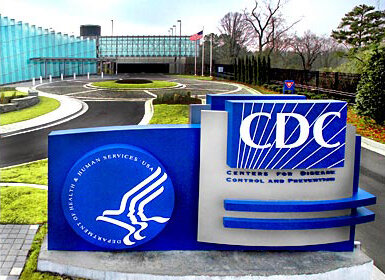Contact Congress to Make Changes in Federal Pain Study
/By Richard Lawhern, PNN Contributor
On January 20, I sent a letter by email to the Acting Director and senior staff of the Agency for Healthcare Research and Quality (AHRQ). The letter requests the federal agency to immediately withdraw its recent review of prescription opioids and other treatments for short-term acute pain.
Grounds for the request are clear evidence of unjustified anti-opioid bias by the authors and gross fatal errors of methodology – all of which invalidate the review as resource material for efforts to revise and expand the 2016 CDC opioid guideline.
The anti-opioid bias of Roger Chou and his co-authors is revealed by their selective cherry-picking of references that fail to explore the major effects of genetics in patient response to opioid therapy, as well as improperly generalized findings based on trials of weak opioids like tramadol, which were applied to all opioids.
The AHRQ authors also omit any exploration of serious side effects and mortality caused by non-opioid treatments such at acetaminophen.
But the most fundamental error in the methods of the AHRQ Review is improper use of “meta-analysis” to lump together data and outcomes from multiple small-scale studies of opioid therapy for acute pain. A major underlying assumption of meta-analysis is that patient response in each trial is distributed on a Normal (bell-shaped) curve. However, this assumption doesn’t work for patients treated with prescription opioids.
The distribution of patient outcomes is actually “bi-modal.” One group of patients may experience side effects from opioids, but very little short-term pain relief; while a second group may have substantial pain relief from just one dose of opioid medication. This reality invalidates the major findings of the AHRQ review.
A detailed critique of the AHRQ study is available on my website. Feel free to review and share this information with your personal physician.
AHRQ is fully aware of the errors noted above but has no intention of responding to demands for a correction of its malfeasance and fraud. Thus, it may be necessary for the U.S. House Government Oversight and Reform Committee to direct AHRQ to withdraw or rewrite its review.
Such an action has precedents. In 2015, the Oversight Committee reviewed complaints from the Washington Legal Foundation and others concerning inadequate public hearings on the CDC’s proposed opioid guideline. The committee sent a letter to then-CDC Director Thomas Frieden asking him to explain why so much secrecy was involved in the drafting of guideline and why it wasn’t made publicly available.
Faced with a congressional inquiry, CDC reversed course by delaying the guideline’s release and publishing the draft in the Federal Register for a 30-day public comment period. A new advisory committee was also formed to review the guideline, which resulted in some changes to its final recommendations.
Urgent Action Request
A similar effort is urgently needed by pain sufferers and their advocates to bring the AHRQ review to the attention of Congress, specifically to the House Government Oversight and Reform Committee. Those who wish to involve the committee in corrective action should telephone any or all of the Congressional offices of committee members.
It is very doubtful that the representatives will actually see anything you leave in their contact portals online. But short, focused telephone calls are harder to ignore. The telephone numbers for members of the House Committee can be found here. If you reach a staff member in their office, you might offer the following information:
1) Identify yourself and provide a call-back number. If you are a medical professional, state your qualifications (i.e. “I am a board certified physician” or “I am a former nursing professional now disabled by agonizing pain.”)
2) If you are a resident of the Representative’s district, say so. You don’t have to be a constituent to make your input.
3) Tell the staffer that you want to report fraud and abuse to the Representative and to the House Congressional Oversight and Reform Committee.
“I want the Committee to demand corrective action from the Agency for Healthcare Research and Quality, in the same way it did in 2015 when it told the CDC to re-open its proposed opioid guideline to extended public review.”
“AHRQ published a review of treatments for acute pain in December 2020. The review is deliberately biased against the only therapies that work, deeply flawed by errors of scientific method, and outright fraudulent in its conclusions. This review must be withdrawn for independent review.”
4) Thank the staffer for their time. Ask “May I expect a callback from a member of the Representative’s staff?”
This is an opportunity to be heard, despite the lies being shouted by anti-opioid fringe groups like Physicians for Responsible Opioid Prescribing (PROP) and Shatterproof.
It is time for you to speak up!
Richard “Red” Lawhern, PhD, has for over 20 years volunteered as a patient advocate in online pain communities and a subject matter expert on public policy for medical opioids. Red is co-founder of The Alliance for the Treatment of Intractable Pain.







